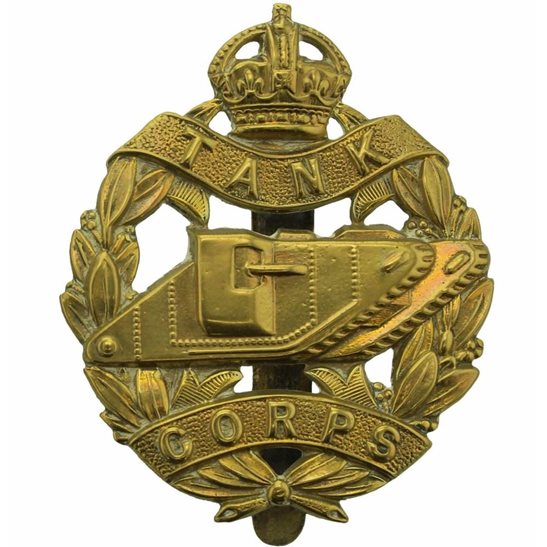Personal Details
Born: 3 September 1890 in Marley Green, Marbury, Cheshire and baptised 25 September 1890 at St. Michael`s Parish Church, Marbury.
Family: He was the fourth of eight children born to William Gosnell, an agricultural labourer, and his wife Elizabeth. He married Mary Ellen Gosnell, nee Chesters, in Quarter 4 1921 in Chester, Cheshire. The couple had two children, Alfred and George.
Residence: In 1901 George`s family were living in Marley Green, Marbury, but by 1911 they had moved to 4 Princes Yard, Whitchurch, Shropshire. The address George gave on his Attestation in 1917 was 43A Pickard Yard but on the 1919 Absent Voters list it was 43A Newtown, Whitchurch. This is quite possibly the same address. Some twenty years later he was living at 599 West Street, Crewe, Cheshire.
Employment: In 1939 George was employed as a railway maintenance ganger.
Died: Quarter 2 1964 in Crewe Cheshire, aged 65.
Military Details
Regiment: Tank Corps
Rank: Private
Service Number: 307168
Date of Enlistment: 3 March 1917
Date of Discharge: 20 July 1919
Reason for Discharge: Demobilised
Other Information: George first attested 5 May 1915 but was discharged on 7 June 1915 for having made a mis- statement as to age. His older brother William also served in WW1, but died of illness in the United Kingdom on 15 January 1916, aged 22. George married William`s widow Mary in 1921.
George was awarded the Campaign Medals (British War Medal and Victory Medal).

The British War Medal (also known as 'Squeak') was a silver or bronze medal awarded to officers and men of the British and Imperial Forces who either entered a theatre of war or entered service overseas between 5th August 1914 and 11th November 1918 inclusive. This was later extended to services in Russia, Siberia and some other areas in 1919 and 1920. Approximately 6.5 million British War Medals were issued. Approximately 6.4 million of these were the silver versions of this medal. Around 110,000 of a bronze version were issued mainly to Chinese, Maltese and Indian Labour Corps. The front (obv or obverse) of the medal depicts the head of George V. The recipient's service number, rank, name and unit was impressed on the rim.
The Allied Victory Medal (also known as 'Wilfred') was issued by each of the allies. It was decided that each of the allies should each issue their own bronze victory medal with a similar design, similar equivalent wording and identical ribbon. The British medal was designed by W. McMillan. The front depicts a winged classical figure representing victory. Approximately 5.7 million victory medals were issued. Interestingly, eligibility for this medal was more restrictive and not everyone who received the British War Medal ('Squeak') also received the Victory Medal ('Wilfred'). However, in general, all recipients of 'Wilfred' also received 'Squeak' and all recipients of The 1914 Star or The 1914/1915 Star (also known as 'Pip') also received both 'Squeak' and 'Wilfred'. The recipient's service number, rank, name and unit was impressed on the rim.

